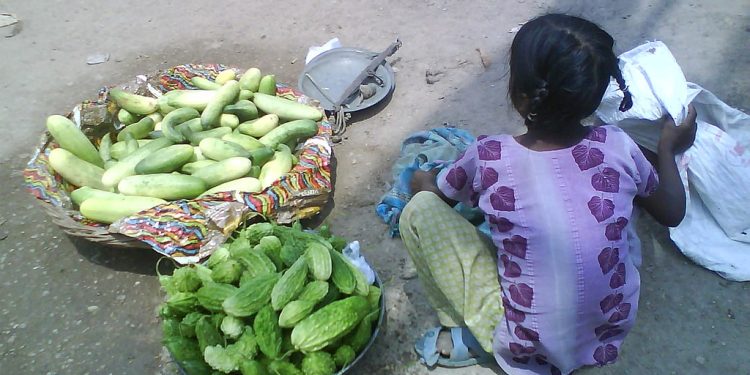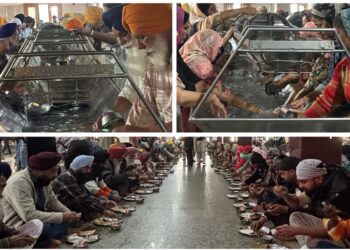By Avaantika Chawla
In May this year, police in Arunachal Pradesh in India’s northeast arrested 21 people, including government officials and a gang of child traffickers, after a 10 days of raids. Five girls under 15 who had been trafficked from Assam were rescued.
Less than a month before that rescue effort, Bihar police intercepted a bus carrying 95 children to Saharanpur in Uttar Pradesh. An official working for the Bihar Child Welfare Committee said an organised ring of interstate child traffickers aimed to push the children, aged between four and 13, into child labour.
Child trafficking and forced child labour are grim realities in India, even as the country seeks to transition to a $US5 trillion economy. It flourishes, despite laws meant to combat the problem.
Government reports and related data from before the COVID-19 pandemic indicate that 11 million children were trapped in many kinds of work, including hazardous labour, suited only for adults. Reports by non-government organisations put that figure closer to 40 million.
Children are engaged in agriculture, domestic work, sex work, brick making and manufacturing industries such as carpets, fireworks, gemstones and silk.
India’s National Crime Record Bureau data shows a steady increase in both child labour and child sexual abuse.
The driving factor for the continued cycle of child labour and trafficking is poverty. Most children forced to work and trafficked belong to economically backward and socially disadvantaged Scheduled Tribe/Caste groups.
Despite being in clear contravention of the International Labour Organization’s Convention on the Worst Forms of Child Labour, forced labour continues to be common in India and here has been lack of unified effort by central and state governments to address it.
Forced labour and trafficking
A 2015 study exposed the situation in India’s cotton fields, in which half a million children from socially and economically backward sections of the population – mostly girls – were “illegally engaged” in producing cottonseeds.
As many as 200,000 of these children were under 14 and were employed by companies and did not work on farms owned by subsistence farmers.
Another study on cotton farms in Gujarat found that many parents had little choice but to consider their children as sources of income on agricultural land. In many cases, negligent and absentee parents showed no responsibility for their wards. The study found that many parents had no clue that their children ended up working on cotton fields.
It also found many children silently endured sexual abuse.
When the children’s families learnt about the abuse, most of them did not intervene, allowing for such exploitation to continue in lieu of regular payments in cash and kind.
The study exposed the case of a 15-year-old girl held captive by a landowner for several years, during which time she was sexually assaulted repeatedly and even had to undergo an abortion.
The demand for child labour is met by trafficking of children. While crime records over the last three years show a decline in human trafficking, child trafficking remained high, constituting about 40 percent of victims. Indeed, most incidents of trafficking relate to forced labour and sexual exploitation.
Instances of bonded labour in India continue to remain high, especially in the brick kiln industry.
Traffickers manipulate workers to accept low-paying jobs in the garb of large advances. They use debt-based coercion to compel men, women and children to work in agriculture, brick kilns, embroidery and textile factories, rice mills, and stone quarries.
Bonded labour is also intergenerational, which means children end up taking on the debts owed by parents when the latter die or are unable to work.
Traffickers lure children with promises of employment even when many victims end up in sex work.
Impoverished families from rural areas are often victims of organised trafficking groups, while many sell off their children willingly. Studies have shown that between one-third and two-thirds of women and children attributed their entry into commercial sex to poverty.
In India, practices such as child marriage can lead to traffickers approaching poor families with promises of high dowries for girls.
Other practices include the Devadasi system which, despite being abolished, continues in some communities and legitimises sexual exploitation of young girls with older members of the family and the community selecting the minor girls to be initiated. Two studies in Karnataka found that 26 percent of women and 46 percent of girls had entered commercial sexual exploitation this way.
Weak law enforcement
While India’s laws to combat child trafficking and child labour are sufficient, poor enforcement has contributed to a crisis.
The 1986 Prohibition of Child Labour Act and the 1976 Bonded Labour System (Abolition) Actdo not provide for stringent punishment.
There are other institutional mechanisms such as anti-trafficking cells at national and state levels, but these are either not adequately staffed or do not have trained personnel.
Government data show lack of implementation with abysmally low rates of conviction.
In addition to legislation prohibiting and responding to abuse, the 2015 Juvenile Justice (Care and Protection of Children) Act put in place a comprehensive child protection system to address the rehabilitation and reintegration of child survivors of trafficking and child labour.
The Act set up child welfare committees to assist children in need of care and protection, which includes survivors of trafficking and child labour.
But there is a lack of coordination at all levels, from implementation of child protection laws to uncoordinated efforts between the judiciary and child protection authorities. This also affects protective measures to prevent re-traumatisation of the child through trials. Children repatriated to their home states travel long distances to testify in courts.
To make matters worse, an anti-trafficking bill addressing the lack of harmony between the laws and the stakeholders has been pending for years.
There is, therefore, an urgent need to train all stakeholders, including police personnel, judges, public prosecutors, lawyers and social workers, and ensuring better coordination to prevent trafficking.
Increasing oversight, along with early intervention to identify and support vulnerable children could go some way to addressing the issue.
Avaantika Chawla is an Assistant Professor of Clinical Practice and Assistant Director of the Child Rights Clinic at the Jindal Global Law School, O. P. Jindal Global University, Sonipat, Haryana.
Originally published under Creative Commons by 360info™.











